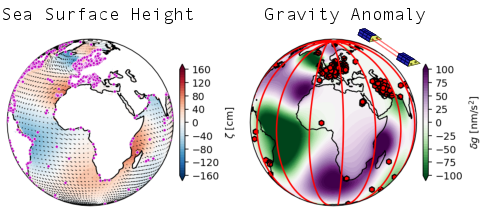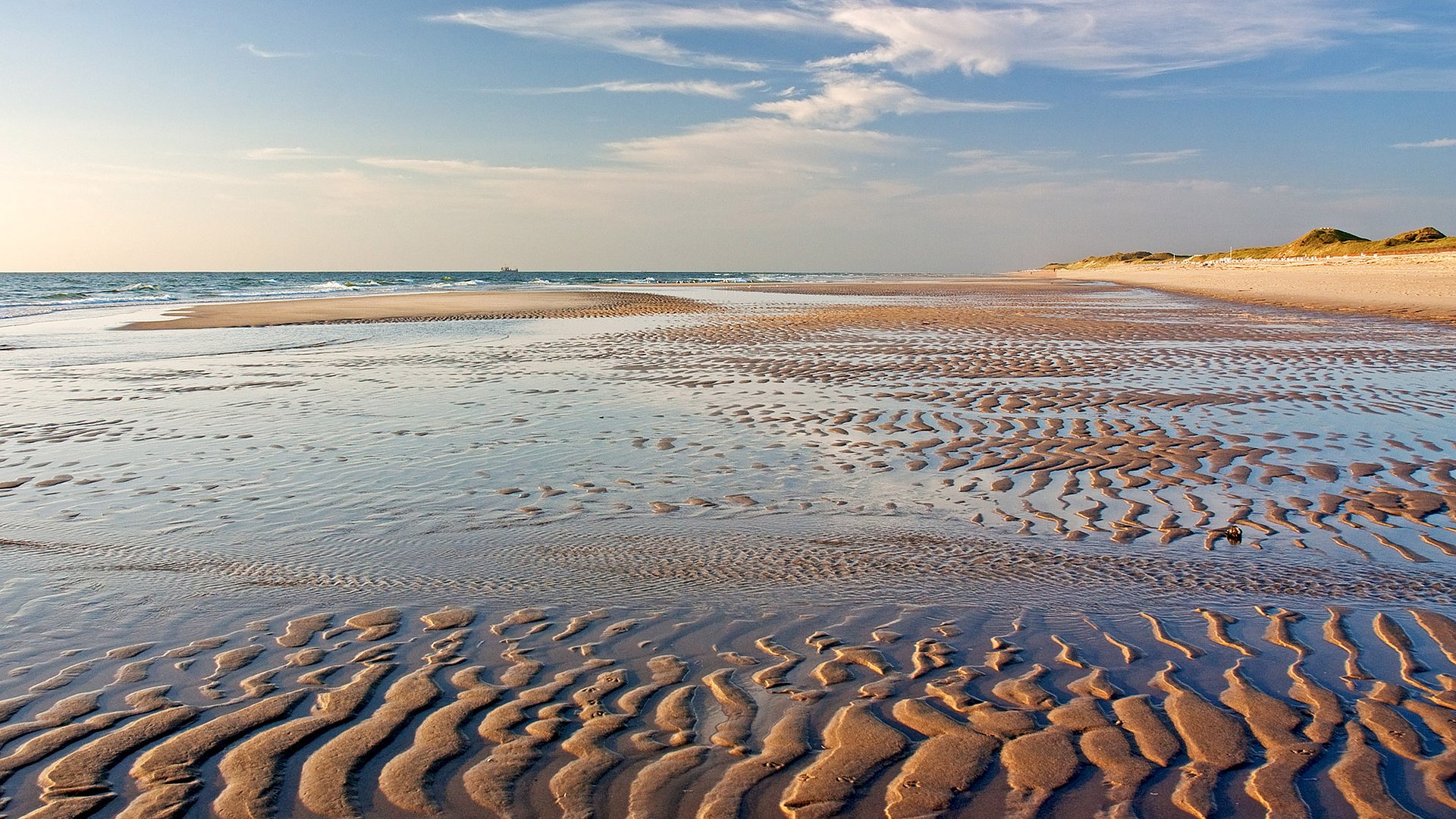Ocean tides distort the orbits of artificial Earth satellites, for example, the satellite tandem forming the GRACE-FO constellation which is dedicated to surveying the Earth's gravity field. To access the climate variables that the GRACE mission is designed to monitor (groundwater, ice sheets, ocean circulation) the impact of ocean tides on the orbits needs to be understood and reduced. We start with a brief recapitulation of the creation of ocean tides.
Roman Sulzbach, GFZ
How do ocean tides develop?

If you have ever visited a coastal region characterized by strong ocean tides you might be familiar with the basic principles behind tidal motion. The Moon attracts the oceans by its gravitational pull. Consequently, the mean gravity pull between Earth and the Moon leads to the nearly-circular orbits of both celestial bodies. However because the gravitational pull reduces with the distance from the Moon’s center, it is slightly weaker on the ‘far’ side of the Earth and slightly stronger on the ‘near’ side of the Earth with respect to the Moon (see Fig. 1; red curve). This difference between the lunar attraction on both sides of the Earth creates the so-called tidal forces that are pushing the world's oceans to form tidal bulges (Fig. 1; pink color).

In reality, several factors, including the ocean depth, the position of the coastlines, and the Coriolis effect, are hindering the world's oceans from assuming said perfect bulges. More complex structures are formed (Fig. 2). However, as a consequence of tidal forces, water masses are redistributed periodically – a fact that is evident by bare eyes from the observation of ebb and flood on the coast.
Effects of tides on GRACE measurements

While a flood event represents the concentration of water mass, i.e. the increase of gravitational attraction, the exact opposite happens during ebb. Imagine a satellite passing over a region that experiences a tidal flood. The additional water masses attract the satellite and, therefore, slightly accelerate it’s movement. On the other hand, a satellite passing over the same area during an ebb event will be slightly decelerated in its orbit. These tiny differences in satellite acceleration and speed can be measured with modern space geodetic techniques. It is important to identify and remove these effects due to ocean tides as they are indistinguishable from acceleration effects due to other mass changes. If they are not reduced, they deteriorate the quality of GRACE-FO measures.
Prediction of tides with the help of a computer model
To understand ocean tides, geoscientists use computer models in combination with ground measurements, which can be satellite observations or terrestrial observations. While modern models are very accurate, they often employ a mathematical approximation, which results in a simplification of the tidal forces. It is assumed that the tidal attraction decreases only linearly over the range of the Earth's diameter. This is a powerful approximation that leads to the description of tidal forces by the black-dashed line in Fig. 1 and can be called the ‘degree-2 approximation’. However, a tiny portion of the tidal attraction (approximately 1/60 of the force) is neglected within this approach (Fig. 1; black curve). In other words, the tidal bulge on the Earth’s side facing the Moon is slightly larger than the other bulge, which has consequences for the ocean tides.
Improved tidal predictions through degree-3 ocean tides
To predict this tiny difference, which is called ‘degree-3 tides’, we used a numerical ocean tide model that operates independently of geodetic data. This is necessary as degree-3 tidal signals are very small with respect to degree-2 tides (Fig. 2), which hinders the accumulation of reliable data constraining this effect. Using the sparse available data sets, it was possible to show that our model predictions agree on a level of 50-80 % with the measurements., which will ultimately allow us to subtract these effects from GRACE measurements and improve the gravity field estimates.
Further reading
- Sulzbach, R., Wziontek, H., Hart-Davis, M. et al. Modeling gravimetric signatures of third-degree ocean tides and their detection in superconducting gravimeter records. J Geod 96, 35 (2022). https://doi.org/10.1007/s00190-022-01609-w
- Pugh, D. and Woodworth, P.: Sea-Level Science: Understanding Tides, Surges, Tsunamis and Mean Sea-Level Changes, Cambridge University Press (2014).
